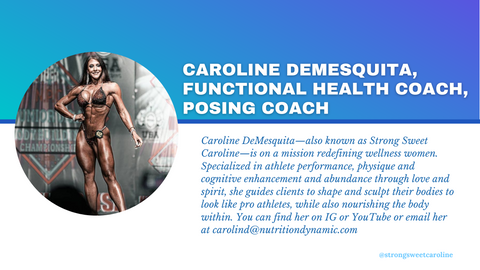by Caroline DeMesquita, Functional Health Coach & Posing Coach
Most competitive females will do whatever it takes to sculpt and build their dream body. This includes extreme dieting, training, cardio sessions, stimulants and additional performance enhancements.
There are many tools in the toolbox. But when it comes down to the final product, when you get that “summer leanness” or “stage leanness”, how do you help the hormones rebalance and return to homeostasis?
That is where post cycle therapy (PCT) comes in. Whether a female is simply adding in cutting agents, muscle preserving agents or cellular development products, these will affect the communication between the hypothalamus and the sexual organs, specifically the ovaries in a woman. This is called the Ovarian Adrenal Thyroid (OAT) Axis.
Any type of stress, physical and mental, will impact the OAT axis and affect your basal metabolic rate (BMR). A few examples could include:
- Caloric deficits
- Excess weight training
- High intensity cardio sessions
- Inner emotional conflict, whether with work, relationships or your environment
- Performance enhancing substances like SARMs or androgenic hormones
Any of the above can create damage in the long haul. The stressors specifically will increase cortisol production, liver and/or kidney damage and can likely lead to sex hormone suppression for estrogen, progesterone and testosterone.
Establishing a PCT protocol can help women prevent and overcome these issues. Methods vary from person to person and lab work can often help before and after a cutting phase. Vidal Coachingcoaches are equipped to manage this through lifestyle changes as well as supportive supplementation. Two of my favorites for helping women reestablish homeostasis in their hormones are Medipure DS and Jumpstart HC.
Rather than guessing what you should do when you are ready to cycle off, let’s set up a call to discuss your needs today!

Sources:
https://www.ncbi.nlm.nih.gov/pmc/articles/PMC6466056/
https://aor.us/an-introduction-to-the-hypothalamic-pituitary-gonadal-axis/





